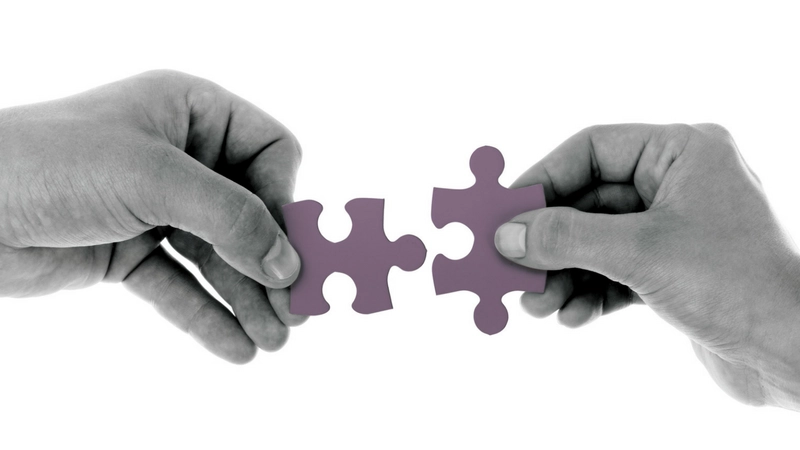Case study
At first glance, outsourcing software development and Agile methodology seem at odds due to potential communication barriers and geographical distance. Yet, with several proven mitigation strategies, the synchronization can proceed without a hitch. Our blog post gives insights into how to implement Agile in your outsourced teams, aligning them with your in-house specialists.
It has been going on for years – the discussions whether it is possible to align
outsourcing software development and Agile methodology. Despite the myth that outsourced
projects get on well only with Waterfall approach, now it is clear that combination of
Agile and outsourcing is entirely possible. Many successful examples have proved that
companies can put together these two ways of doing things and make the most of such
synthesis. A lot of businesses are eager to combine Agile practices and outsourcing
software development since both approaches have undeniable advantages. However, such
integration needs efforts from both sides – customers and a software development company.
So what does it take to combine Agile methodology and
outsourcing software development
successfully? Let’s discover it in the article.
So what is Agile?
Initially, Agile methodologies were designed specially for the software development. Leading to increased transparency and favorable outcomes, such practices became widely popular. Agile methodologies include a number of different frameworks, such as Scrum, Kanban, Crystal, Extreme Programming, Lean software development methodologies, and many others. At the same time, all these methodologies share a common vision, key values, and principles, which make Agile approach gainful and unique. These core values and principles are outlined in The Manifesto for Agile Software Development and include individuals and interactions over processes and tools, working software over comprehensive documentation, customer collaboration over contract negotiation, and responding to change over following a plan.

On the whole, Agile software development can be described as incremental, collaborative, flexible, and evolutionary. It offers to break development process into iterations – timeboxes from one to four weeks, which consist of such stages as planning, analysis, design, coding, and testing, and are designed for lowering the risks and making a product more adaptive to changes. So, one more crucial characteristic of Agile is flexibility and being adjustable to changes in order to respond to constantly evolving and changing market needs. Moreover, Agile development does not work without continuous feedback, which is meant to improve a product before it is too late. One more inherent part of any Agile method is efficient and face-to-face communication, which includes good teamwork and many discussions, and, due to agile visionaries, leads to better performance and final product in the end.
When Agile and outsourcing come together
Outsourcing software development part to offshore companies is a well-known and widely
popular practice. As a result, you can save a significant amount of costs and time, get
access to a vast talent pool worldwide, become able to obtain real professionals on your
board, and many others.
As both outsourcing and Agile have a lot of pros, it comes naturally that idea of combining
them sounds great. So why is it so troublesome? Because working with an offshore team usually
means a lack of trust, face-to-face communication, some cultural discrepancies, time zone difficulties,
and so on. However, these challenges have all the chances to be overcome, but only with the
effort of both parties and a special approach.
What does it take to combine Agile and outsourcing?
Finding a trustworthy software partner
In Agile approach, it is crucial to build a truly trusted partnership. The thing is not only about executing your work properly and making things done; it is about bringing your idea to life. Ideally, your outsourced vendor must be interested in your idea and company growth at all, understand your vision, philosophy, and principles. Objectives must be clear for everyone, and your offshore team has to be on the same page with you.

To start with, there must be a thorough research made about a company, its operating
model, functioning on the market as well as monitoring the feedback and reviews,
portfolio, website, profiles in social media, blog posts, etc. After in-depth analysis and
communication with your potential partner, it must become visible whether you will be able
to work on your project together, is it going to be your trustworthy partner and part of
your own team or not. A trusted relationship between the external and internal team with
high level of transparency, visibility, and collaboration is a must if the thing is about
going Agile way.
In addition, there are many companies, which build their workflow on Waterfall model and are
not used to Agile. If you want to start Agile software development, you should find the partner
who is not only acquainted with this way of doing things, but implements these practices in
its work.
Establishing proper communication
Communication lies at the core of agile methodology since it is the key to understanding
the problems to tackle and coming up with the right solution. So, it is imperative to have
it on its finest level. Usually, agile projects include a high level of direct
communication and less documentation. Of course, outsourcing poses a real challenge with
such things as a distance between partners, different native languages, time zones, and
cultural diversity since all these make establishing good collaboration more challenging
and tricky.
Nevertheless, there are many methods for keeping up well-tuned and close communication even
considering these obstacles above. Regular meetings, reports, instant messengers, phone calls,
video conferences, and some team building activities will erase communication difficulties
and straighten the cooperation process. Though, such communication channel as emailing is not
recommended to use as it lacks personality. In order to reach more agility, it is preferable
to stick to regular video calls for better connection and visualization as it is the closest
to face-to-face communication. Also, catching on some informal topics during conversations
will help get to know your partner more and build stronger relationships. Moreover, visiting
your offshore partner when it is possible would be a step towards better understanding of your
partner and the working process overall.
Building effective teamwork
For Agile software development, effective teamwork is crucial for delivering high-quality
software and reaching desired results. It is more about ‘we’ than ‘I’. And the issue of
teamwork should not be underestimated since it does not come so easily, especially when
outsourcing is in the game. As both onshore and offshore teams have not met in person,
they can miss treating each other as a team. So, you should pay attention to this issue
and integrate the work of both teams to the greatest extent. Every team member is
important and plays a substantial role. This way, every team member needs to feel equal
and be ready to speak up. There has to be enough effort and motivation from all the
members to make the working process and cooperation really productive and have successful
results from working together.
Therefore, it is essential to create conditions and requirements suitable for all the people
working on your project because, due to Agile, efficient teamwork pays off even more than individual
accomplishments in the end.
Signing agile contracts
As it was mentioned before, Agile methodology is about building trust within a team. Certainly, building truly trusted relationships comes harder when you outsource and deal with an offshore partner. In order to prevent themselves from possible damages, when companies outsource, they usually make up contracts with set up requirements and conditions. In general, outsourcing contracts lack flexibility and possibility of changes. However, if you use Agile, a contract must be designed in a way that would treat your software development vendor as a partner, not being too strict and inflexible.

So, when making up a contract with the Agile team, take into account a certain level of flexibility and potential changes, not just particular results and numbers, which just have to be reached. Lawyers, who help with contracts, must be aware of these specifics and reflect them in the contract. It must also be considered that such working process is iterative and evolutionary, which means requirements and needs can be changed throughout the process.
Taking into account time zones
Locating in different time zones may pose some difficulties when it comes to communicating
with counterparts. When there are daily meetings planned, they should be arranged due to
the specifics of both sides so it may have some impact on working day schedule. Still, it
is critical to synchronize timelines to the extent so as to have at least 1-2 overlapping
hours for communication moments. Discussing project issues, clarifying requirements,
explaining not understood points, gathering feedback, and just being in touch with updates
and plans are essential and require some overlap time.
Therefore, there is no need to choose between the Agile and
outsourcing software development
because it is absolutely possible to combine both of them effectively. Still and all, putting
together these technologies presents some challenges, which require certain efforts from both
a client and offshore development team. It is crucial to build a strong, trustworthy partnership,
form effective communication and good teamwork, overcome language, time zones and culture barriers,
and concentrate on real value and encouraging flexibility. In the end, combining Agile and
outsourcing properly has the power to lead things to amazing results.
